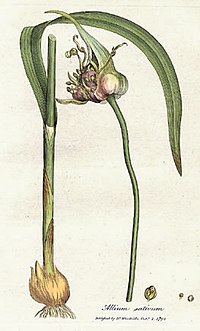
Photo from wikipedia
Abstract Drumstick is a tree with a range of potential commercial uses: the vegetative organs have high nutritional value and the seeds have high oil content. In the present study,… Click to show full abstract
Abstract Drumstick is a tree with a range of potential commercial uses: the vegetative organs have high nutritional value and the seeds have high oil content. In the present study, an efficient regeneration protocol for this multipurpose tree has been developed using leaf segments as explants. In addition, the effects of genotype, developmental stage and inoculation orientation of the explants, and the combination of plant growth regulators (PGRs) in the culture medium have been investigated. It was found that Murashige and Skoog (MS) basal elements supplemented with 0.8 mg/L 6-benzyladenine (BA), 0.2 mg/L kinetin (KT) and 0.05 mg/L a-naphthaleneacetic acid (NAA) provided the most suitable medium for shoot-bud regeneration, delivering a maximum regeneration frequency of 93.33% and a mean of 4.40 shoots per explant. In addition, orienting the distal ends of the explants down towards the medium was much better than them facing upwards. We were able to root approximately 90% of the regenerated shoots on MS medium with 0.1 mg/L NAA. Even though success of this protocol varied according to genotype, it still has high applicability at a large scale and could be used in the production of high quality plantlets to meet large scale cultivation needs. In addition, it may be useful for genetic transformation studies.
Journal Title: Industrial Crops and Products
Year Published: 2017
Link to full text (if available)
Share on Social Media: Sign Up to like & get
recommendations!